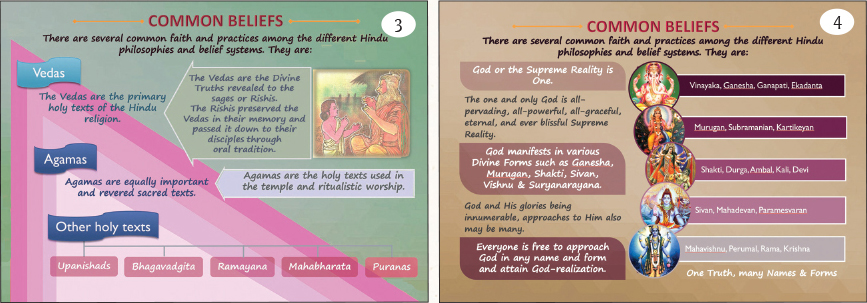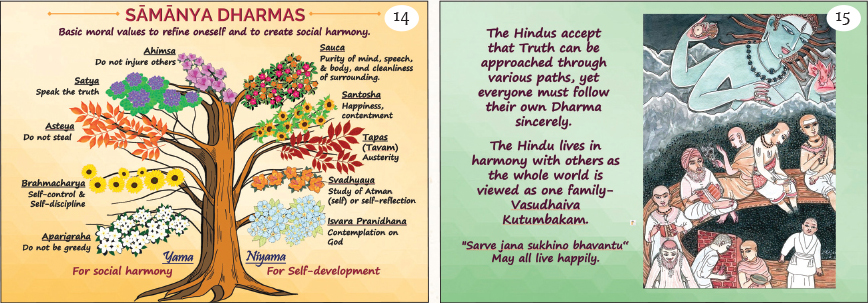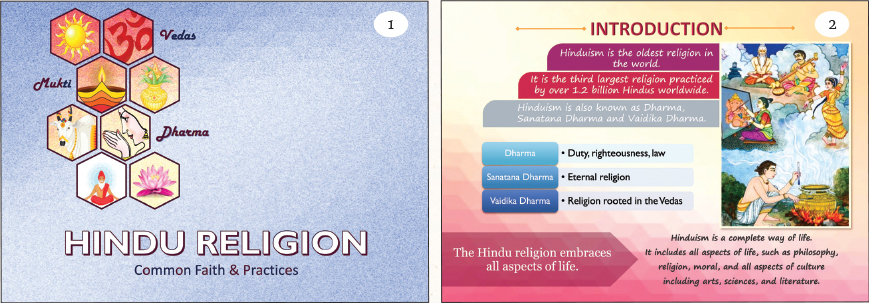A review of the Malaysia Hindu Sangam’s concise and authentic presentation of Sanatana Dharma’s commonly held beliefs and practices
In 2017 the leaders of the Malaysia Hindu Sangam fearlessly tackled a common problem of Hindu communities worldwide: what exactly do we all believe? Other religions have clearly defined creeds or specific texts which spell out in precise detail what one is to believe and practice if they are born into or join the religion. While individual Hindu sects have achieved such clarity, and some (including Hinduism Today) have strived to produce all-encompassing lists of beliefs and practices, the Sangam’s effort, to be available in December at malaysiahindusangam.org, is among the best we have seen to date.
Their Hindu Advisory Board, under the direction of their president, Datuk Mohan Shan, took up the challenge four years back. Key roles were filled by Dr. K. Thilagawathi, a retired professor of Indian studies from the University of Malaysia, Swami Brahmajnanananda of the Divine Life Society, priest Sangaratna Sivasri A. P. Muthukumara Sivachariar, and Dr. Chandrakala, a school teacher with a PhD in English. Ranee Narendrath, whom we interviewed for this article, coordinated the project and assembled the graphics for the presentations in booklet, Powerpoint and video formats.
They were inspired by the works of Swami Sivanananda, the Ramakrishna Mission and Himalayan Academy’s “Nine Beliefs of Hinduism,” first published in 1990. From these sources they developed a list of 20 beliefs, reduced that to nine, then changed their approach to a more comprehensive presentation, not limited to specific beliefs. In doing so, they appear to have taken to heart the introduction to Himalayan Academy’s “Nine Beliefs of Hinduism,” which summarized the thinking of Gurudeva, Sivaya Subramuniyaswami: “Our beliefs determine our thoughts and attitudes about life, which in turn direct our actions.”

This was a breakthrough, it appears, because in the lists of beliefs they had previously assembled, they had realized that not everything being stated was a “belief” as such. For example, the idea that the whole world is one family isn’t a belief, it is an attitude based on the belief that we are all one in God. The Pancha Mahayanjnas, or five daily sacrifices, also aren’t beliefs as such; they are actions based on beliefs.
In making the presentation, Ranee said, “There was a continuous process of reviewing, adding, removing and joining. The final selection included the most basic, easy-to-digest concepts that are common and prevalent among all Hindu sects. Also, we tried as much as possible to avoid controversies or displeasure.”
The 16-page presentation lists about nine common beliefs on pages 3 through 7: in the Vedas, Agamas and other holy texts; that God is the Supreme Reality; that God manifests as various divine forms such as Ganesha; in dharma, karma, reincarnation, etc.

Next in the presentation are the four ashramas—bramacharya, grihasta, vanaprastha and sannyas, then the four aims of life, the five daily sacrifices, the samskaras (name giving, first feeding, ear piercing, beginning of study, marriage, etc.), devotional practices such as japa, pilgrimage, bhajan, tapas, etc., common symbols such as the Om, swastika, deepa lamp and cow; the basic yamas (nonviolence, non-stealing, etc.) and niyamas (purity of mind, contentment, etc.), and acceptance “that truth can be approached through various paths, yet everyone must follow their own dharma sincerely.”
According to Renee, “The Sangam is targeting all types of audiences in Tamil, English, and Malay languages. These are the basics of Hinduism, for everyone, young and old.”
For the next few years, all Sangam training and courses will be based on this presentation, including through their existing religious classes in schools and temples. They have already used the material in a 2019 Religious Teachers’ Camp with more than 60 participants. Swami Brahmajnanananda also began a course for members of the Divine Life Society, but had to stop on account of the pandemic.

Overall, Hinduism Today found the Sangam’s “Hindu Religion, Common Faith and Practices” to be an outstanding presentation. It sets an excellent example for other organizations to follow, one which takes into account specific local religious traditions and customs while remaining true to the more universal understandings of all Hindus. The material is to be released at the Sangam’s annual general meeting in December and should then be available on their website.

What a magnificent endeavor! I found a divine hand in this !
Does the ‘Sangam’ have a branch in western India?